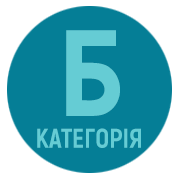TEACHING TECHNICAL WRITING TO APPLIED LINGUISTS AS A COMPONENT OF PROFESSIONAL TRAINING
DOI:
https://doi.org/10.32782/2307-1222.2024-57-35Keywords:
types of technical documentation, applied linguists, technical writing, technical writerAbstract
The article examines the problem of teaching applied linguists technical writing. It is noted that technical writing is a specialized type of communication that conveys complex information clearly, sufficiently. It acts as a link between experts in a specific field and ordinary users of information, promoting the dissemination of technical documentation in various fields. Its primary purpose is to explain complex technical concepts or procedures in a clear and understandable manner to an audience that may include industry professionals, developers, users, or other interested parties. Technical writing typically uses terms and technical terminology, as well as structured formats such as tables, graphs, and charts, to enhance understanding of the material. The main differences between technical writing and other types of written communication are analyzed. The skills a technical writer must possess to effectively create technical documentation are described. The specified stylistic and grammatical features of the technical documentation are mentioned: the use of simple and understandable vocabulary, supported by diagrams and tables to facilitate the perception of the material; using precise terminology to avoid ambiguities; giving priority to the active state (Active Voice); use of standardized abbreviations with appropriate explanation; structuring the document into logical sections and subdivisions; avoiding complex and cumbersome sentences. The main types of technical documentation are characterized, such as inquiries and responses, adjustment letters, refusal letters, memos, cover letters, brochures, descriptions, manuals, newsletters, reports, specifications, requests for proposals and grant proposals. Examples of various types of technical documents written by applied linguists are given. Special attention was paid to writing the installation guide.
References
Alred Gerald J., Charles T. Brusaw and Walter E. Oliu, Handbook of Technical Writing. Boston, Bedford/St Martins, 2018. 640 p.
Phillip A. Laplante. Technical Writing. A Practical Guide for Engineers, Scientists and Non-technical Professionals. CRC Press, 2019. 300 p.
Heike Hering. How to Write Technical Reports. Springer. 2019. 262 p.
Alan S. Pringle, Sarah S. O’Keefe. Technical Writing 101: A Real World Guide to Planning and Writing a Technical Content. 2011. 329 p.
Zhong, F., & Hou, G. (2017). An integrated curriculum for technical writing in higher education in China. Paper presented at the 2017 ASEE Annual Conference and Exposition, Columbus, Ohio.










